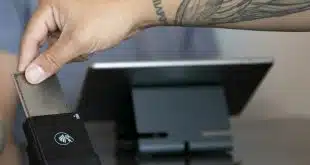The United States seems to excel at developing new electronic payment systems, but it struggles with commercializing them. Oh yes, debit card payments are nearly universal now, but if you were following this business back in the ‘80s, when networks, banks, and merchants were looking at the matter of ATM cards at the point of sale, you know it took years to make that universality happen.
Now we have the matter of mobile payments. Remember the debates over host card emulation as a mode for near-field communication between mobile device and the POS? One side argued HCE democratized mobile payments by opening it up to a wide array of banks and merchants. The other side (mainly the telecom companies, plus Apple) countered that HCE was too risky, that tying mobile payments to the secure element was the only responsible technique.
Well, those debates raged just three years ago, and what do we have now? NFC with HCE seems to have carried the day. What U.S. mobile-payment program other than Apple Pay uses SE-based NFC? That’s a remarkably quick resolution for a payments argument in this country.
But instead of simplifying matters, that resolution has simply ushered in an even broader debate. “It’s a very complicated, hot mess,” Cherian Abraham told us recently when we asked him about it. Abraham should know. He’s digital payments and identity executive at Experian, and he’s followed this story very closely for years.
In this more fundamental debate, one side, mainly merchants, calls into question the whole matter of NFC. That’s why, says Abraham, we see a flowering of mobile payments using quick-response codes.
“There’s misaligned incentives between issuers, retailers, and consumers,” he says. Interchange, he adds, is a big example. Retailers and service providers prefer QR codes, which can give them proprietary control over the mobile payment, as well as its cost and its data. “‘If I turn on NFC, that will cut me out of the payment somehow,’” is how Abraham sums up this line of thinking.
This “misalignment” is distracting everyone’s attention from the larger problem with mobile payments: consumer adoption. “There’s no technology solution that’s going to change that,” Abraham warns. Getting consumer adoption and usage to higher levels requires some kind of spiff for the user, he says, and a reorientation of incentives between merchants and issuers that leads to more trust.
Nobody, right now, seems to know how to do that. And no wonder. It’s not just a tall order, it’s a skyscraper-size order that surfaces years of doubt and mistrust over one payment innovation after another—including the debut of debit cards.
A “complicated, hot mess” indeed.
—John Stewart, Editor, john@digitaltransactions.net




